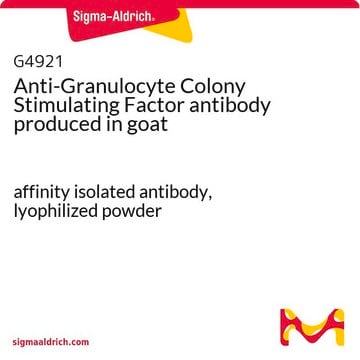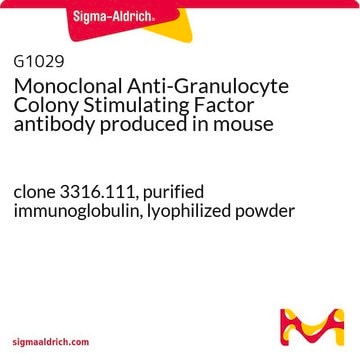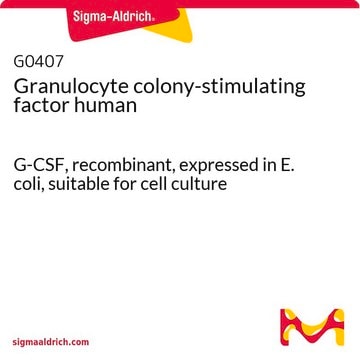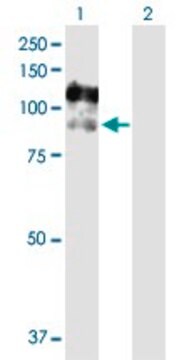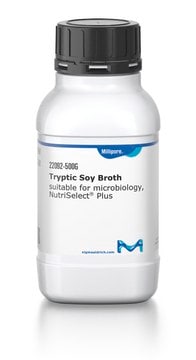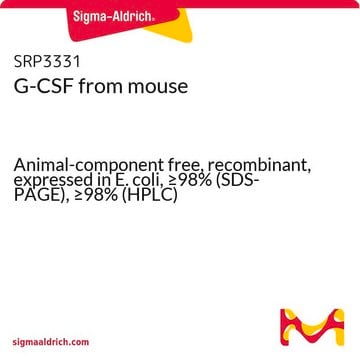G5421
Monoclonal Anti-Granulocyte Colony Stimulating Factor antibody produced in rat
clone 67604, purified immunoglobulin, lyophilized powder
Synonyme(s) :
Anti-Csf3, Anti-Csfg, Anti-G-CSF, Anti-MGI-IG
About This Item
Produits recommandés
Source biologique
rat
Niveau de qualité
Conjugué
unconjugated
Forme d'anticorps
purified immunoglobulin
Type de produit anticorps
primary antibodies
Clone
67604, monoclonal
Forme
lyophilized powder
Espèces réactives
mouse
Technique(s)
capture ELISA: 2-8 μg/mL
neutralization: suitable
western blot: 1-2 μg/mL
Isotype
IgG1
Numéro d'accès UniProt
Température de stockage
−20°C
Informations sur le gène
mouse ... Csf3(12985)
Catégories apparentées
Description générale
Monoclonal anti-granulocyte colony stimulating factor recognizes mouse G-CSF. The antibody shows less than 0.06% cross-reactivity with recombinant human G-CSF.
Immunogène
Application
Forme physique
Clause de non-responsabilité
Not finding the right product?
Try our Outil de sélection de produits.
Produit(s) apparenté(s)
Code de la classe de stockage
13 - Non Combustible Solids
Classe de danger pour l'eau (WGK)
WGK 1
Point d'éclair (°F)
Not applicable
Point d'éclair (°C)
Not applicable
Équipement de protection individuelle
Eyeshields, Gloves, type N95 (US)
Certificats d'analyse (COA)
Recherchez un Certificats d'analyse (COA) en saisissant le numéro de lot du produit. Les numéros de lot figurent sur l'étiquette du produit après les mots "Lot" ou "Batch".
Déjà en possession de ce produit ?
Retrouvez la documentation relative aux produits que vous avez récemment achetés dans la Bibliothèque de documents.
Notre équipe de scientifiques dispose d'une expérience dans tous les secteurs de la recherche, notamment en sciences de la vie, science des matériaux, synthèse chimique, chromatographie, analyse et dans de nombreux autres domaines..
Contacter notre Service technique